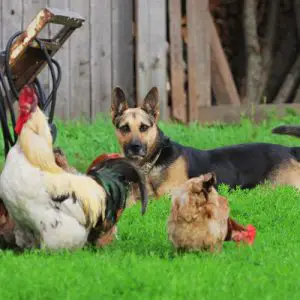Nutritional information is vital for owners when assessing if a certain food will be appropriate for their dog. It is also a tricky business as the content of the snacks varies dramatically depending on the manufacturer and the preparation process.
When we are writing these articles for the website, we do our best use find trustworthy sources with accurate information.
How Our Writers Source Nutritional Information for Dog Treats
Calculation of nutritional information can be done in different ways. This itself means that the end result will vary depending on the method used.
One way is to use laboratory analysis, where the finished product is sent away to an independent lab and the product is tested using approved methods.
Another way is to calculate the quantities using the raw ingredient nutrition data or recipe, remembering to process any losses or gains to calculate the finished product’s overall value.
Rather than do primary research into nutritional values, our preference is to do a meta-analysis of existing research.
Finding Existing Research
The writers will research each product and identify the most popular and/ or the best-selling brands.
All food products are legally required to display the nutritional information relating to their food on the packaging (although depending on your location, different countries have different laws stipulating which nutrients are required to be declared).
We find the information displayed on the website. This usually includes all of the ingredients and the composition and ratios of these individual components.
Average Across Minimum 3 Products
We do this for a minimum of three products, but usually a lot more. We then calculate an average. When you see the table stating the percentage of fats, protein, fibre, ash and moisture in our articles, these are averages taken from a number of different manufacturers of the same product.
The product information is usually readily available on the website, although sometimes we contact the manufacturer directly and discuss the nutritional information with them.
This method allows us to display the average nutritional information for each of the dog treats to allow owners to assess them and make a decision about choosing suitable treats for their pets.
Guidelines (Not Gospel)
The issue with a lot of the products discussed on Kip and Twiggy’s website is that the nutritional information varies greatly depending on a few important factors. These are discussed below:
The Manufacturer
Each manufacturer will source their raw materials from different places and even if they are produced using the same described method, there will be individual variations between each company.
Depending on the country there will be different food safety measures in place which may affect the production.
This is one of the reasons we always include the provenance of the products and recommend products certified or approved with animal welfare credentials. This gives the consumer some reassurance the animals have been treated well and that welfare standards are kept to a certain level.
How the Product is Made
Each manufacturer will make their product under slightly different conditions and using different methods. For example, some of the dried products are air-dried and some are baked at a low temperature in an oven.
These two methods will affect the nutritional composition of the end product.
This also affects the safety of the product as some methods mean the treat is still classified as raw food. If this is the case, all the usual risks associated with raw feeding such as exposure to harmful bacteria, apply to the treat. Therefore extra precautions need to be taken.
The Nutrition and Welfare of the Animal Used
The animal’s general condition and health status, as well as their nutrition, will have a huge effect on the quality of the end product.
For example, grass-fed animals have a different flavour of meat compared to animals who are not fed grass. Animals fed a diet with a higher energy density results in heavier weight at slaughter and higher fat content.
Another example is stressors such as extremes of weather, fighting between animals, fasting and transport of animals can all affect the pH of the meat and mean it is drier.
Animals that are undernourished or diseased and have poor body condition will not have as much muscle present so this would affect the composition of any food products made from the carcass. This is another reason we always recommend using products with animal welfare certifications.
In Short…
Due to these variations, even if the nutritional information is stated on the product label, it still means that the figures given are not 100% accurate (unless of course the manufacturer is testing each individual treat – which, let’s face it, they aren’t).
So to a certain extent, we have to make assumptions. We base our decisions on which treat to choose on the average composition and the general trend.
An Example of Extreme Variation
For example, lamb ear chews are generally high in protein and low in fat so this is considered to be the norm for this treat. Owners will choose this product as quite often they are stated to have a guaranteed analysis of under 5% fat.
However, some lamb ear chews have very high amounts of fat recorded. Some are up to 22%- this is over 4 times as much, and nearly a quarter of the overall composition of the treat.
This is why it is vital that we check the labels for each individual product.
Conclusion
So there we have it.
We gather as much information as possible to enable us to write accurate and informative articles.
It is difficult to quantify nutritional information accurately due to there being so many different variables.
But by averaging across multiple brands and products that have done lab testing, we believe the information we publish is a fair and reasonable representation.



